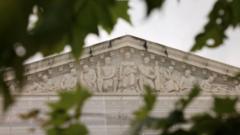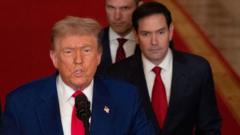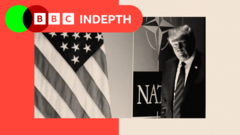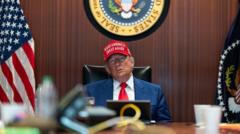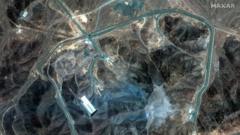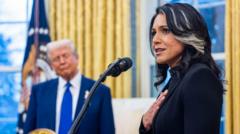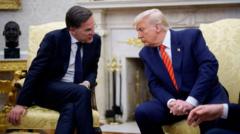In a landmark ruling, the Supreme Court granted President Trump enhanced powers regarding executive orders, particularly affecting birthright citizenship. This decision paves the way for a more assertive presidential agenda and limits the role of lower courts in blocking such actions.
Supreme Court Ruling Empowering Executive Orders Cheers Trump and Future Presidents
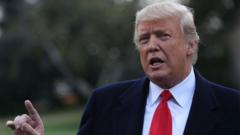
Supreme Court Ruling Empowering Executive Orders Cheers Trump and Future Presidents
The Supreme Court's recent decision limits lower court interventions, a move that bolsters President Trump's power over birthright citizenship and executive actions.
The Supreme Court struck a significant chord on Friday by empowering Donald Trump and future presidents, effectively curbing the ability of lower courts to impede executive orders. The ruling was met with enthusiasm as President Trump hailed it as a "big, amazing decision," expressing satisfaction with what he deemed a "monumental victory for the constitution, the separation of powers and the rule of law."
This landmark ruling not only permits the Trump administration to implement a contentious executive order aimed at ending birthright citizenship but also invigorates the president's capacity to carry forward various other policy initiatives that have encountered judicial roadblocks. Critics of the ruling caution that implementing this executive order will not be straightforward, as it necessitates states to manage the citizenship details on birth certificates—a task they are likely to approach with caution, especially in Democratic-led areas.
Justice Amy Coney Barrett, writing for the majority, acknowledged the complexities involved, allowing lower courts the chance to address broader implications of Trump's order and defend the interests of states potentially burdened by changes to citizenship protocols. This sets the stage for inevitable legal disputes, as states may argue that the sweeping administrative consequences warrant a comprehensive injunction against the enforcement of Trump's directive.
"This ruling is a giant win!" Trump announced, asserting that it would tackle what he termed the "birthright citizenship hoax" and curb exploitation in the immigration arena. As the political scales tilt with the court's ruling, Trump's Attorney General Pam Bondi indicated the Supreme Court would be addressing the birthright citizenship matter in further hearings scheduled for October.
The move to restrict lower court powers also signals a shift in judicial dynamics as both Democratic and Republican administrations historically faced challenges with judges blocking executive actions on ideological grounds. With this new ruling, Trump—alongside future presidents—now has an expanded capacity to override prior judicial restrictions, enhancing the executive branch's autonomy.
During the current administration and preceding ones, judicial interventions have halted several presidential initiatives, ranging from immigration policies to regulatory reforms. The Supreme Court's ruling, by limiting unilateral judicial injunctions, creates a landscape where executive actions can advance more freely, pending higher court reviews.
While the court's directive emphasizes that it will allow for judicial checks on presidential actions deemed unconstitutional, it fundamentally alters the balance of power, affording presidents increased maneuverability. As both parties observe the implications of this ruling, it offers a glimpse into a potentially transformative era for executive authority in the United States.



